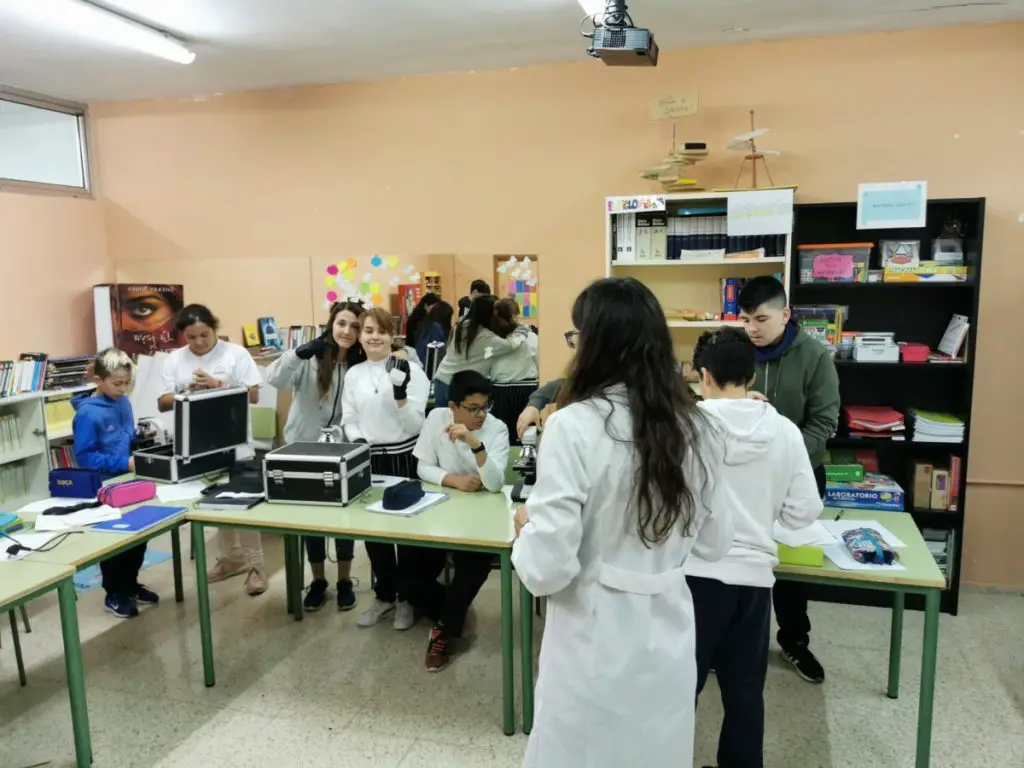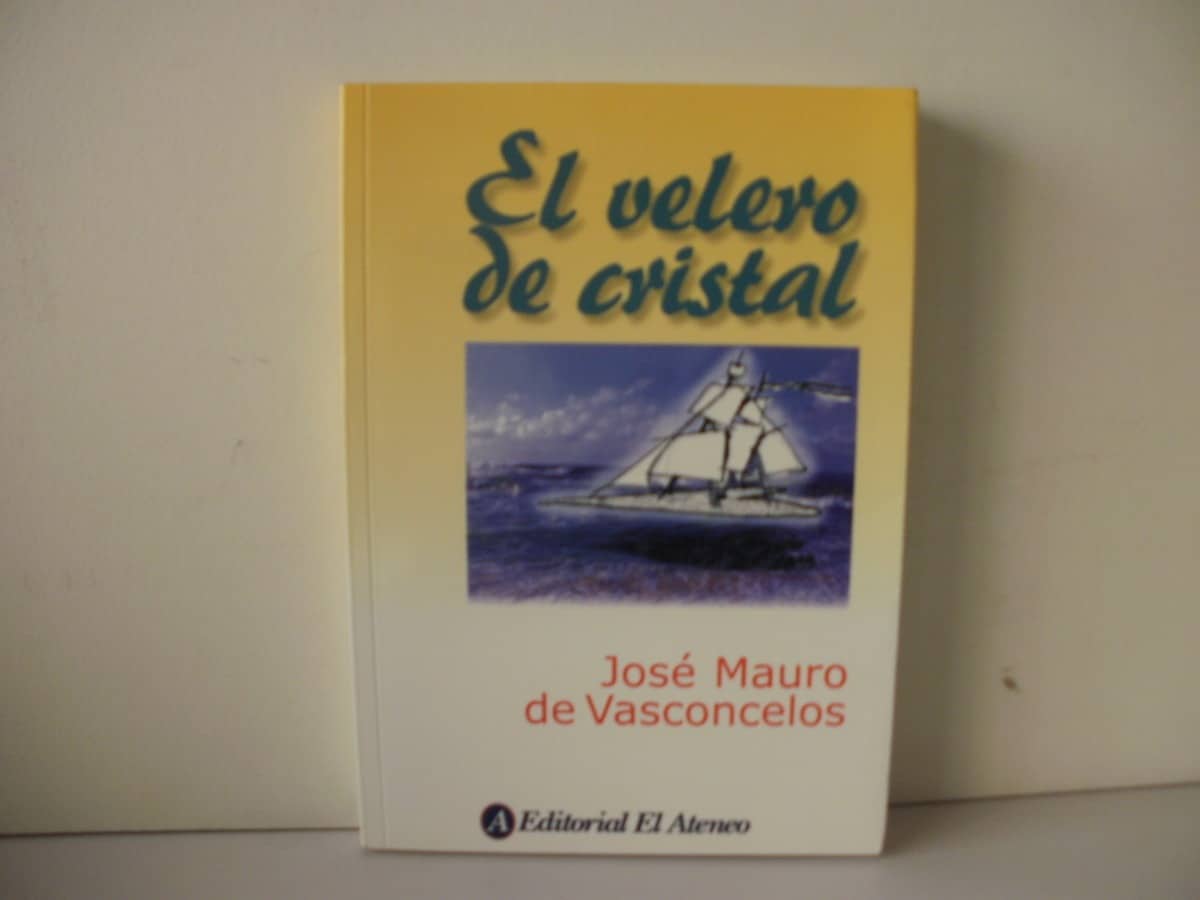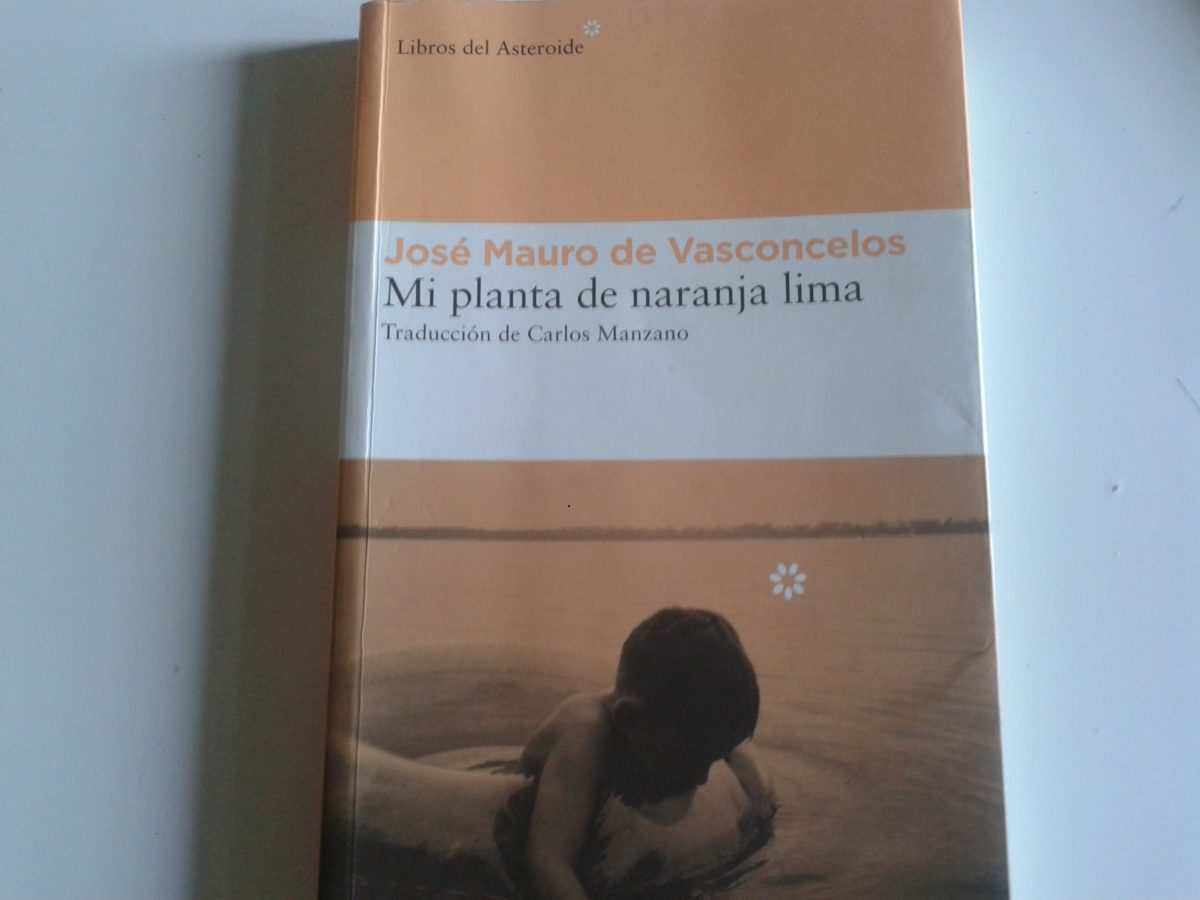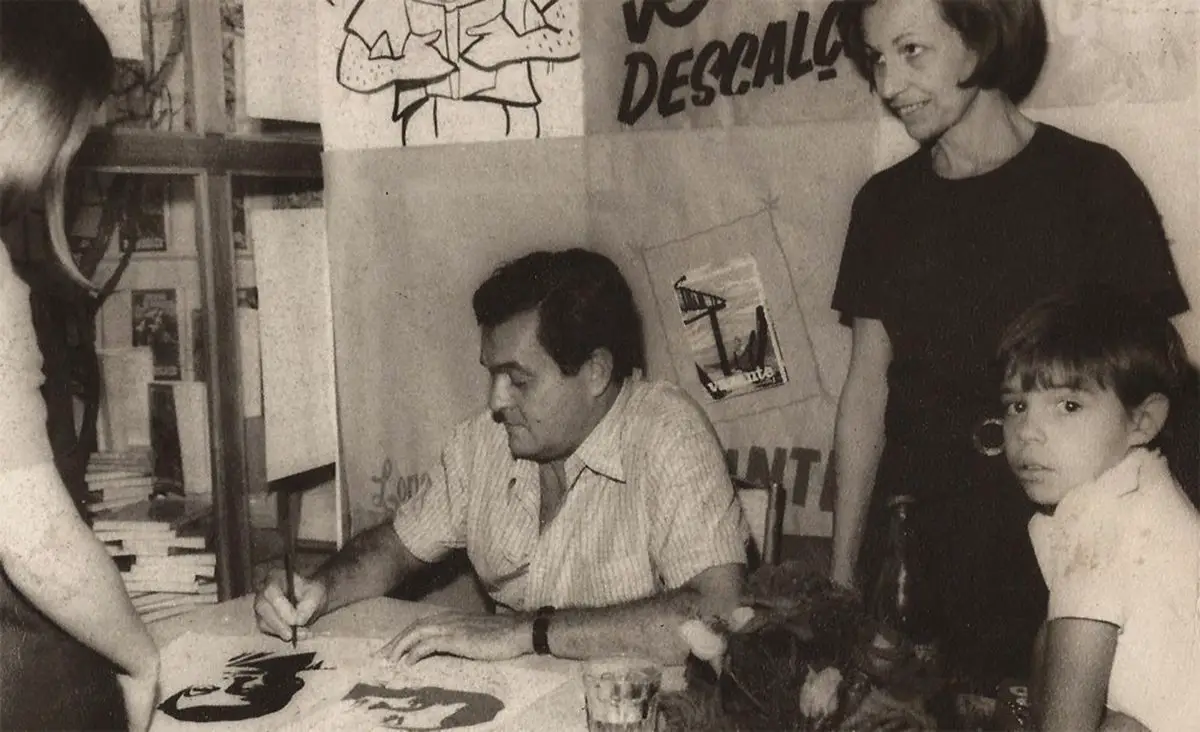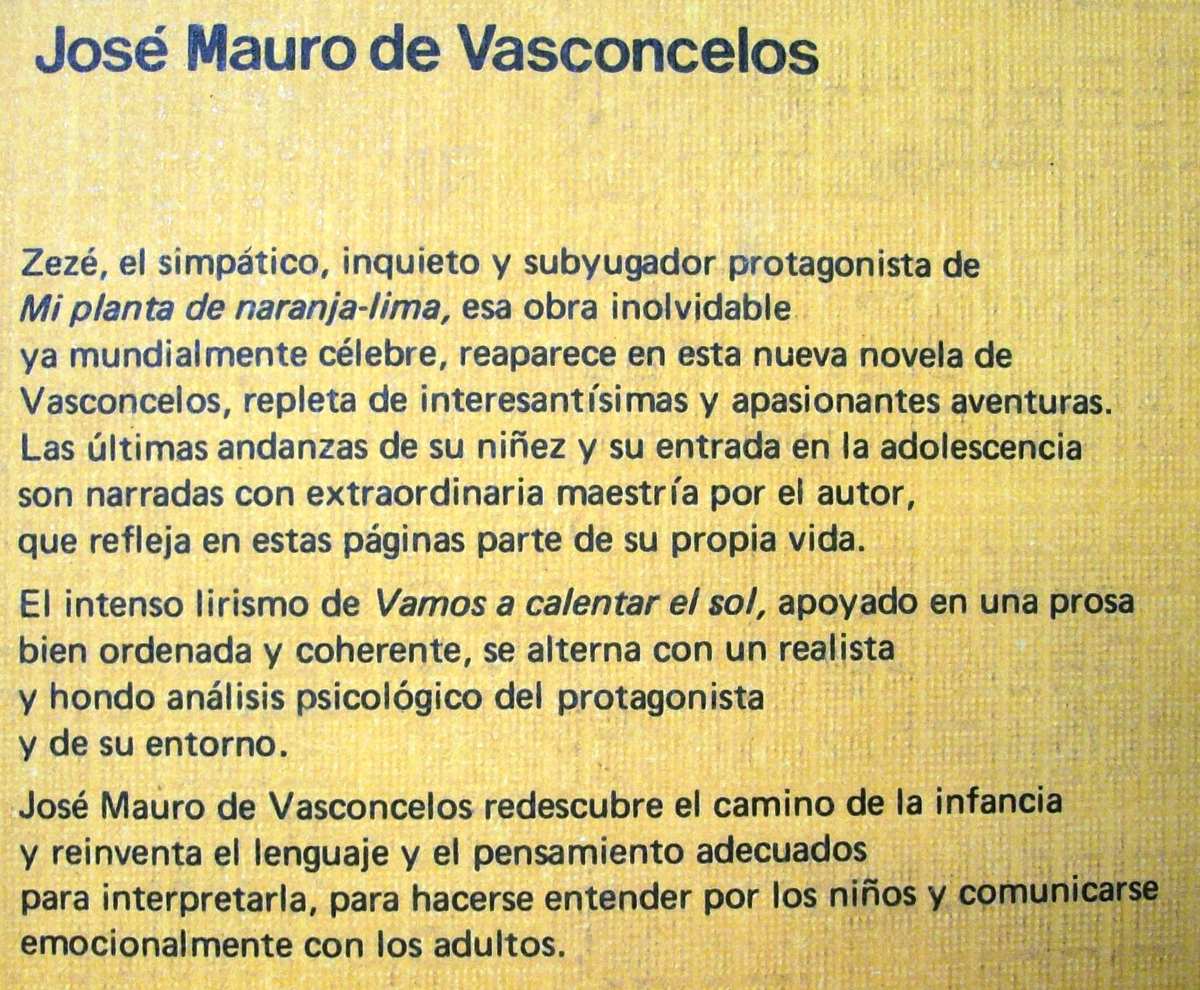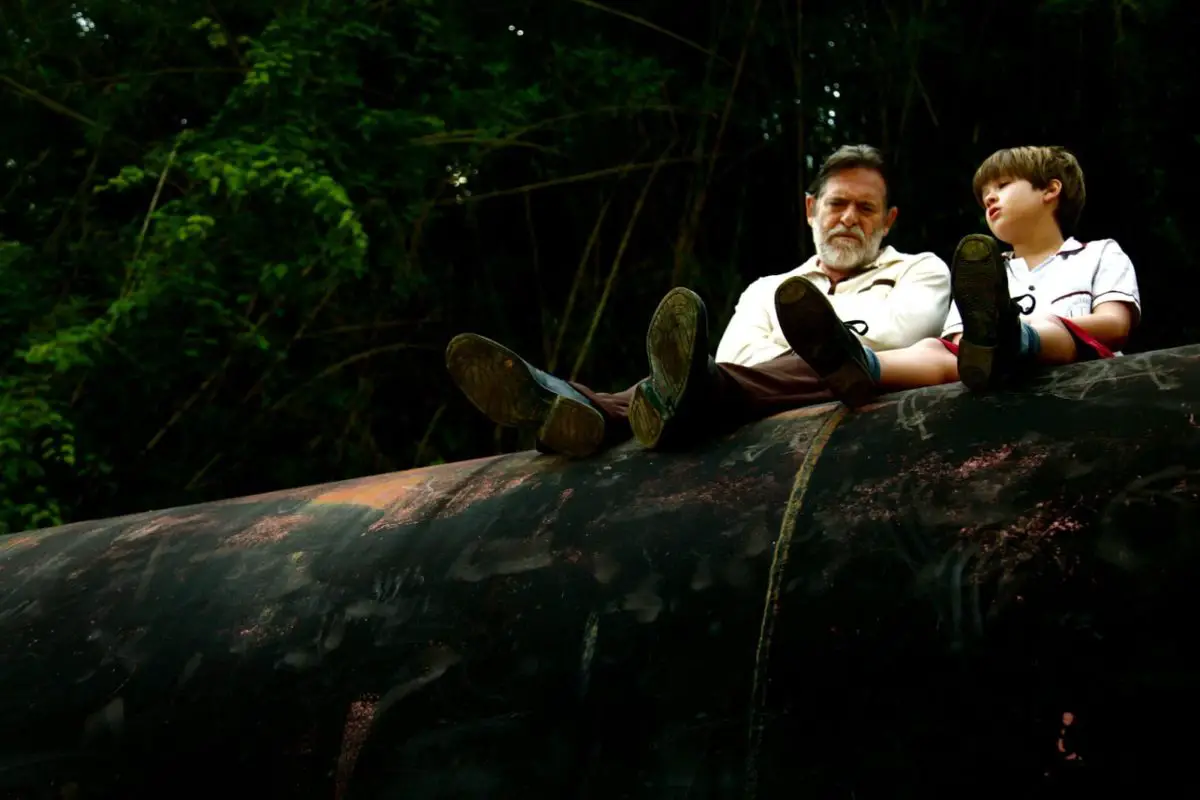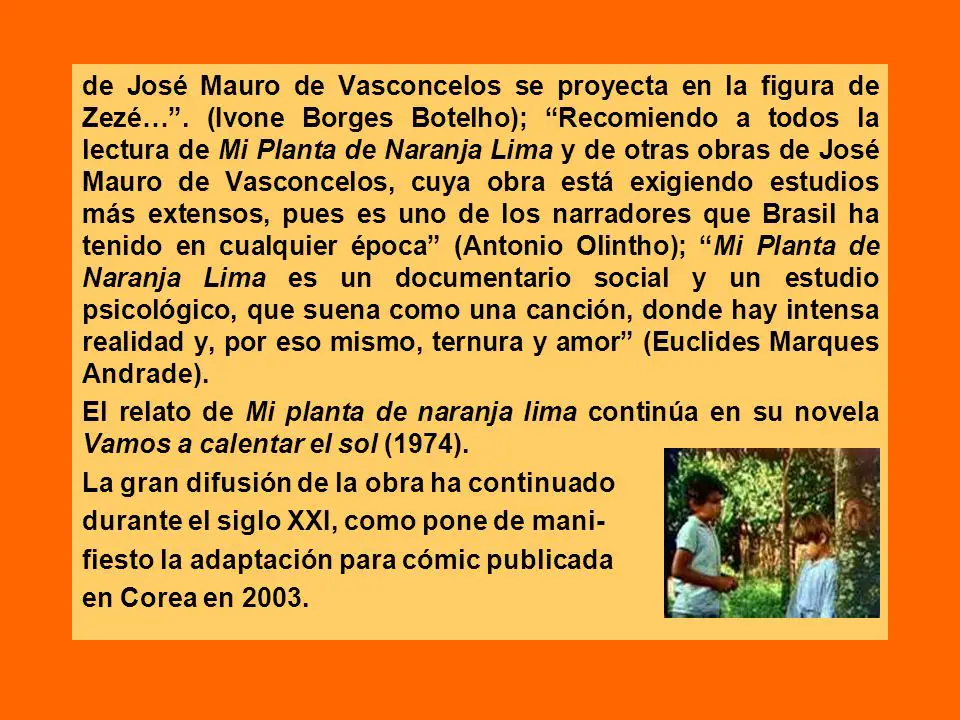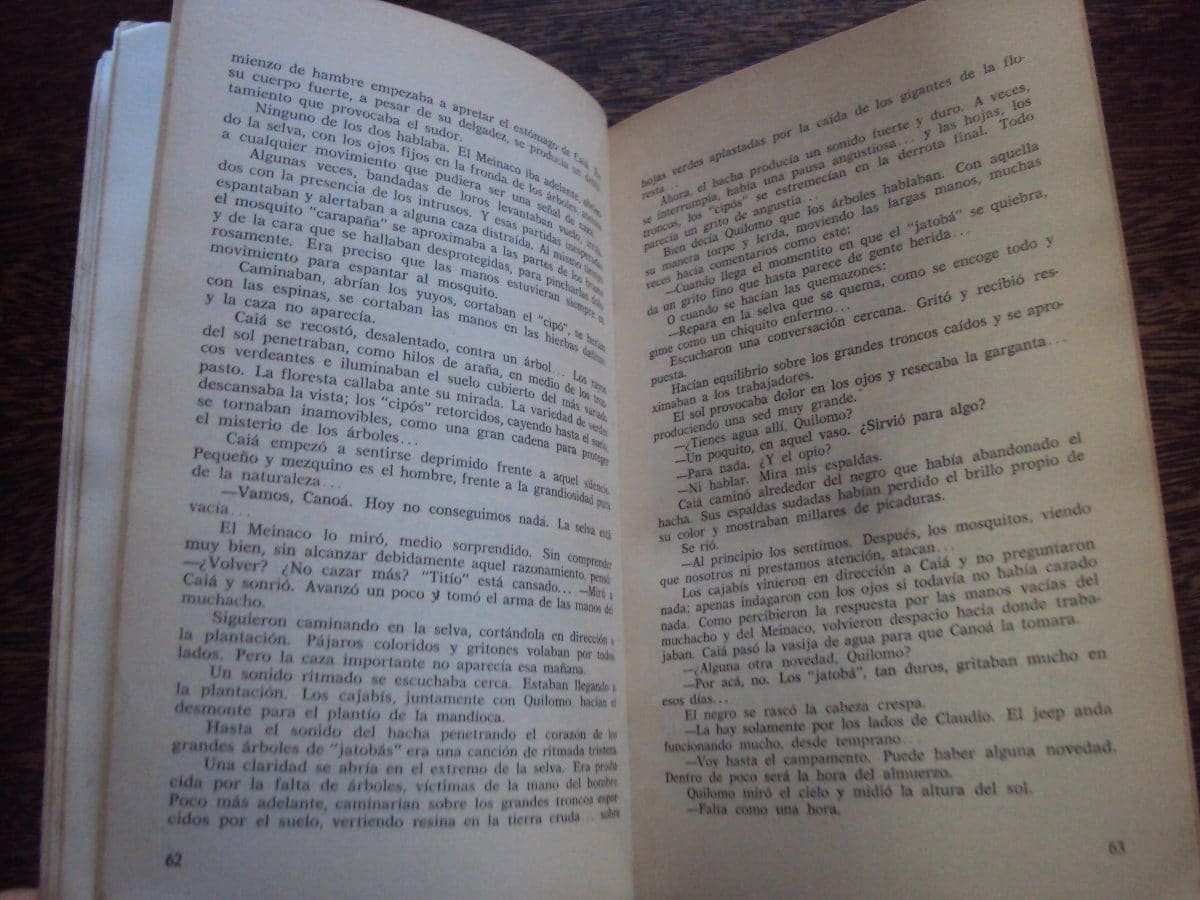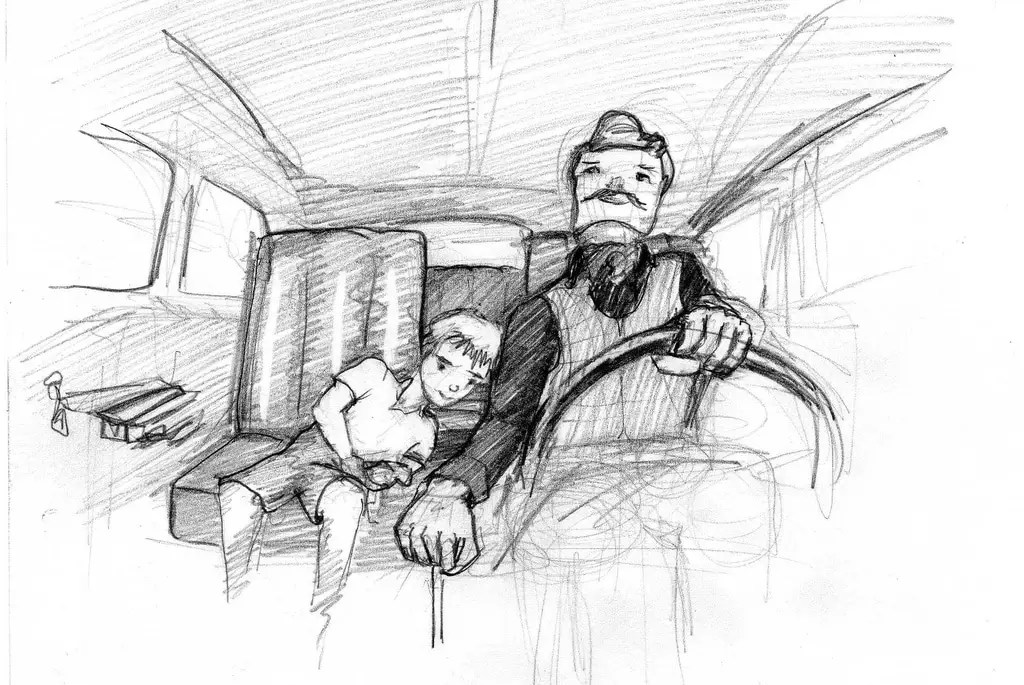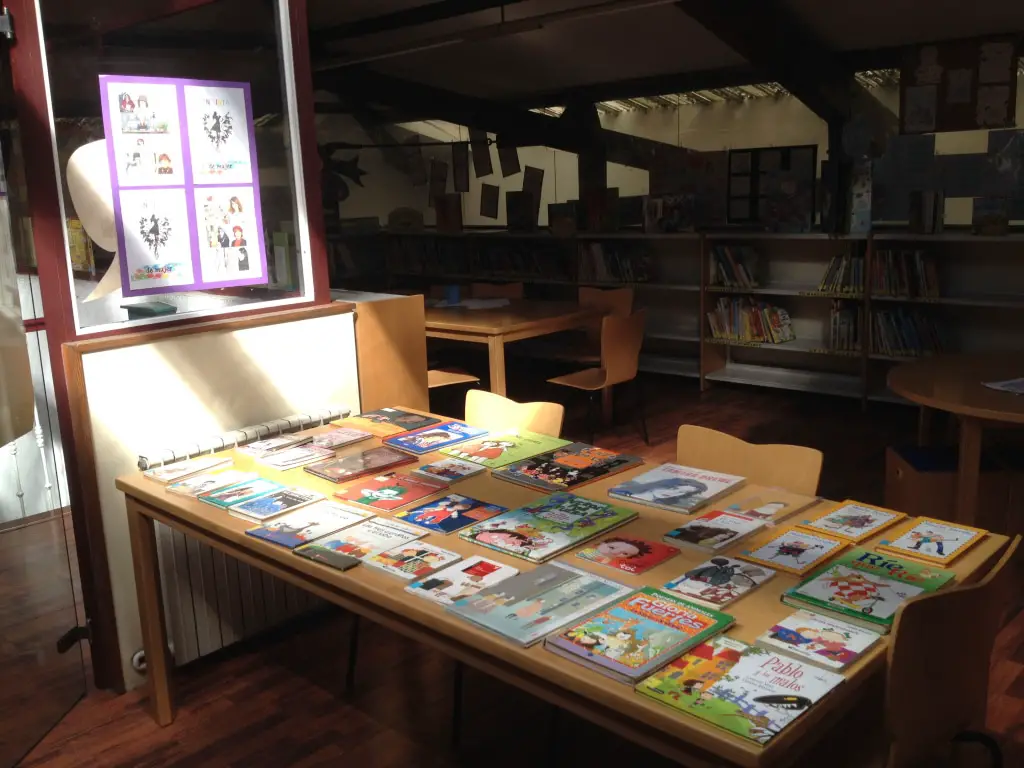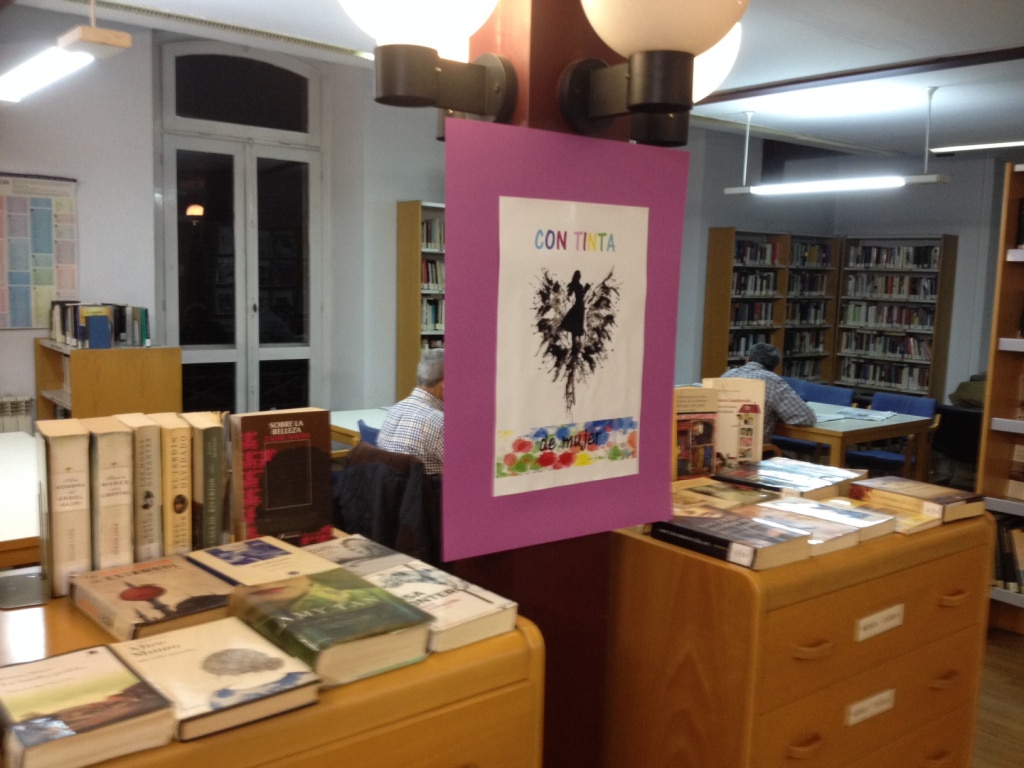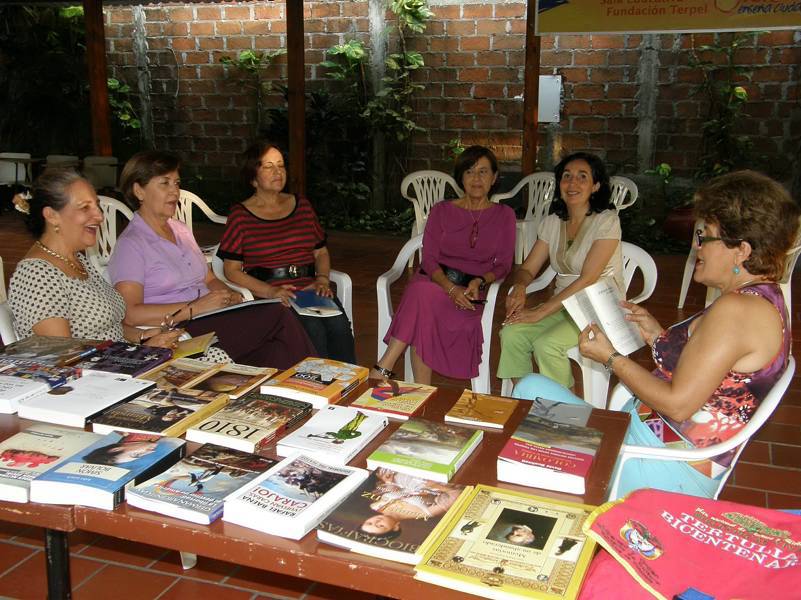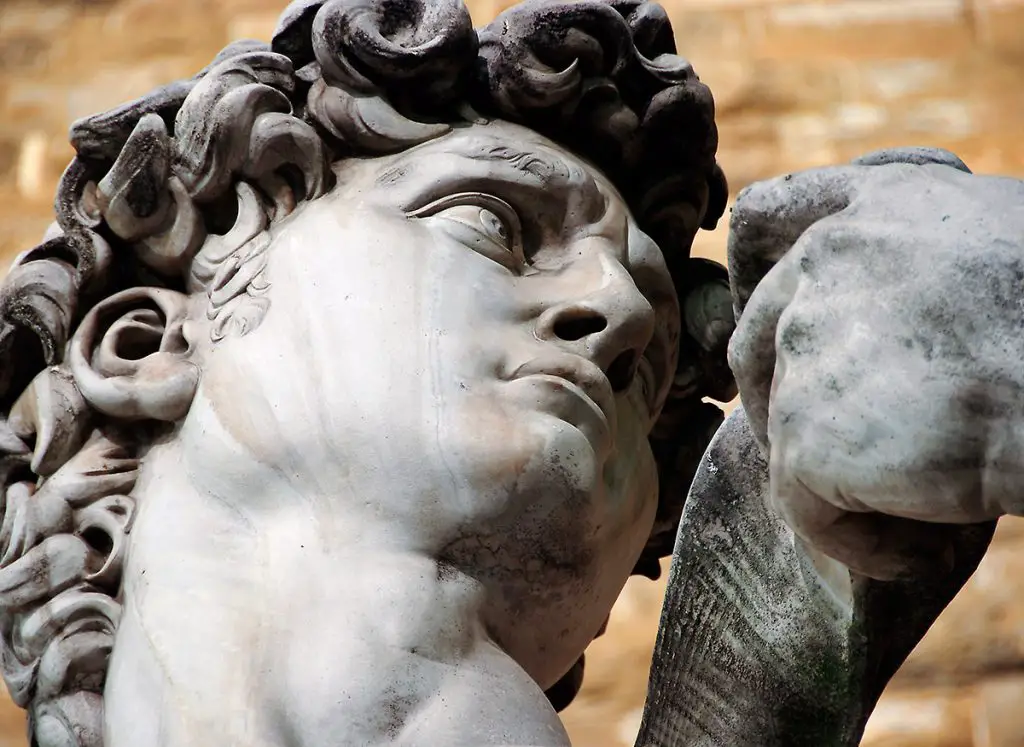Learn all about My Lime Orange Plant, written by the literary figure José Mauro de Vasconcelos. This tender story is a great reference in Brazilian literature. Discover the life of Zezeo, a very poor little boy.
Summary of Mi planta de naranja lima
My Lime Orange Plant can be considered an autobiographical story, as it reflects the experiences of the author, José Mauro de Vasconcelos. Another peculiarity that contributes to this characteristic is that the novel is told in the first person.
The novel was published at the beginning of the 1960s. Towards the end of the 1960s, the novel’s success in Brazil was overwhelming, due to the large number of copies sold, as well as 32 translations into different languages to sell the book in other Latin American countries.
My Lime Orange Plant tells the story of Zezeo (also known as Zezé), who experiences many painful moments that make him mature quickly. Zezeo and his family were very poor and lived in one of the poorest neighbourhoods in Brazil.
Zezeo and his family were renting a very modest house, and the landlord demanded that the family pay the outstanding rent or be evicted. Every morning, Zezeo and his brother would walk along the San Pablo River, where they noticed a house on the bank. The two young men agreed that if they were evicted from their current home, this would be their new home.
Zezeo was supported by his faithful uncle Edmundo, who gave him gifts for his humility and willingness to fight as a child. The child learnt to read without anyone teaching him; he liked horses, so his uncle gave him a toy horse to play with, to help him forget a little about the problems his family was facing because they could not pay the rent.
So Zezeo and his family had to leave the house and move to a small village near the river, surrounded by huge trees that provided shade and fresh air. The support of this family was essential, as each brother had the responsibility of looking after the younger brother. For this reason, Zezeo was very attached to his older brother, Totoca.
Just as Zezeo grew up abruptly, thanks to the twists and turns of life, The Little Prince showed great wisdom in the work of Saint Euxpéry, who gave children an important place in literature in each of the stories told.
Because there were so many bushes guarding their new home, Zezeo and his brothers decided to take possession of each tree so that they could each have one. Zezeo, however, was given a small lime-orange plant, which he was a little unhappy with, as it was the smallest planting compared to that of his other brothers.
As the days pass and the family settles into their new home, Zezeo begins to appreciate the little lime-orange plant. The boy begins to talk to the bush until they become true friends; in other novels, friendships between humans and animals have been explored, as in Platero y Yo.
The state of poverty and deprivation in which Zezeo and his other brothers lived meant that they had no toys, but the boy learns that a large shipment of toys donated by the mayor is arriving in his community. Zezeo was thrilled with the news and told his siblings to accompany him to the place where the toys would be distributed. His other siblings were slow to accompany him, which meant that by the time they arrived, the toy truck had already left. They were left without any toys.
https://www.youtube.com/watch?v=Qf9l7FatqeM
The reader of Mi planta de naranja lima is touched by the solidarity between siblings. For Christmas, Zezeo received only a horse from his uncle Edmundo, but when he saw that his younger brother Luis did not receive his present, he decided to give him his horse. At this moment, Zezeo regrets that he is very poor. The boy complains to his father about their lifestyle, who loses control and moves away from his little son, who is still full of sadness.
Throughout the story, Zezeo plays many pranks that eventually result in punishments and beatings from his father. On one occasion he frightens a woman by turning a small sock into a snake. Zezeo picks up a wounded bird from the ground and takes it home. The little boy grew fond of the bird, but his ever-wise uncle advised him to set it free when its injured wings had healed.
Although the young protagonist always acted naively and to please others, he was always reproached for his behaviour. For example, in one episode of Mi planta de naranja lima (My Lime Orange Plant), the boy gives his teacher a huge bouquet of flowers several times, but she notices that the roses have been stolen, so she reproaches the boy to stop him from continuing to steal.
Zezeo’s mischief never stops, and on another occasion he gets hold of some candle bait to display on the steps of a casino near his home. A lady trying to enter the casino slipped and fell, and the boy died laughing. Fortunately, his parents never found out about the child’s daring, or he would have been beaten again for his innocent antics.
Zezeo’s family is experiencing financial problems again, as his father has been sacked from his job. This prompts Zezeo to take to the streets with a classmate to sell flyers. His father’s powerlessness and despair change his attitude towards the whole family, adding to the crisis of the moment. Once again, sadness overwhelms the protagonist, who takes refuge in the lemon-orange plant in his garden.
One day, after leaving school, Zezeo would climb into the vehicles that passed near his house to take advantage of the transport. The boy used to travel in the suitcase of the cars, but one day the driver noticed the boy’s presence in the back of the car and got out to beat him as punishment. Zezeo returns home wounded and immediately starts talking to Minguito (the name the boy gives to his lemon-orange plant), trying to escape from his sad reality.
Zezeo continued to get into trouble for his mischief. The boy went through the wall of a nearby house to look at a garden he liked, but when he was discovered by his neighbour, and in his eagerness to run away to avoid being hit, he cut his foot on a piece of glass on the ground. His older sister, Gloria, healed the boy’s foot, but he continued to bleed until the school nurse came to help. She left the scene with biscuits and sweets, which she later distributed to his siblings.
As the story of My Lime Orange Plant progresses, Zezeo is reunited with the driver of the vehicle he fell out of on one of his unplanned trips. The two become close friends, sharing both the good and the bad of their lives. The boy becomes so fond of the Portuguese that he adopts him as his second father.
A new illusion arrives in Zezeo’s life to give him a moment of joy, and it is nothing more than the making of a balloon. His brother Totoca encourages him to raise a small amount of money to buy the materials needed to build it. With all the necessary tools in hand, the brothers begin the arduous task of making their big balloon, but they are interrupted by another brother to go to lunch.
Zezeo does not heed his brother’s call to eat, causing him to get angry and destroy the balloon he was building. This incident leads to a fight between the three brothers, until Gloria intervenes to defend Zezeo. With this incident forgotten, the child finds his father in despair over his inability to find work; the protagonist thought it appropriate to sing several songs to cheer him up a bit, but the father took this as a lack of respect and beat his son even more.
Zezeo reaches a point of despair and pain, until he confesses to his mother that he should never have been born, because since his arrival in the world he has done nothing but suffer and be reprimanded for trying to do things right. The boy summons the Portuguese to tell him what has happened; in one of these statements, the man is horrified by the words of the little boy, who wants to commit suicide by throwing himself on the tracks, but the Portuguese convinces him not to do so.
Suicide by train has been observed in other literary works, such as Tolstoy’s Anna Karenina.
On a fishing day with his best friend, Zezeo asks the Portuguese man to adopt him and make him part of his family, as he is tired of his precarious life and his father’s abuse. The man replies that he cannot adopt him, but that he will take care of him from now on to make his life happier.
Zezeo’s and the Portuguese’s moments of happiness were short-lived, as tragedy was to strike again, with the widening of the road that connects his house to the rest of the neighbourhood. Unfortunately for him, the lime-orange grove, which had been a magnificent sight, had to be demolished to make way for the new asphalt. Naturally, this broke Zezeo’s heart into a thousand pieces, given the importance of the orange grove in his life.
As if that were not enough, his supposed father died when the train ran over his vehicle while he was driving, and this loss completely upset Zezeo, who lost his mind for a moment and went into a state of shick until he wandered the streets with his eyes lost and without saying a word. One of his brothers helped him and took him home, where he relapsed into a state of sickness, allowing himself to die and be reunited with his friend in heaven.
Zezeo’s family situation improved considerably with his father’s new job. Fortune and prosperity knocked on the door of their home. Things have changed and the boy has improved, though he regrets that the lime-orange plant has been cut down. In the last chapter, Zezeo was already an adult and wrote a letter to the Portuguese to tell them of his most painful episodes and to thank them for all the affection they had shown him.
Plot of Mi planta de naranja lima
Mi planta de naranja lima tells the story of a young boy and his family, who are very poor and have suffered many hardships. Zezeo, the protagonist of the story, grows up prematurely because of all the physical blows he has received from his father, as well as the psychological ones caused by the death of his faithful companion, the Portuguese, and the loss of his lime-orange plant.
The Lime Orange Plant represents the refuge and comfort that Zezeo turns to when he has problems, both at home and in his daily life outside the home. The protagonist of My Lime Orange Plant tried his best to please his father during the family’s most difficult moments, but received many blows from him in return. Pierre, the protagonist of War and Peace, learns a similar lesson when he learns of his wife’s infidelity, a fact that completely changes his life.
The various pranks of My Lime Orange Plant that the protagonist played led to annoying problems and later to scolding from his father or quarrels between brothers. However, when Zezeo is reunited with the man in the vehicle in which he was transported incognito, they become close friends, finding in him a means of escape, just as he does with his lemon-orange plant.
Zezeo suffers two losses: the death of his best friend, Portugués, in an accident, and the death of Minguito, the plant he was talking to at the beginning of the story. Life smiles on Zezeo and his whole family when his father gets a job. You will also find summaries of other classics, such as García Márquez’s 100 Years of Solitude.
Characters in Mi planta de naranja lima
Mi planta de naranja lima has a large number of characters, although many of them are of little importance to the plot. They can be divided into main characters and secondary characters:
Main characters.
-Zezeo (or Zezé): is the main character and protagonist of Mi planta de naranja lima. He is a boy who has lived in extreme poverty. Despite all his shortcomings, he has led a life full of mischief to make himself and others happy, although at the beginning he does not receive anything positive from the other characters, with the exception of his brothers Luis and Gloria. He is particularly fond of a lemon-orange plant that grows in his new home, and of the Portuguese. He takes refuge in them to forget his problems.
-Manuel Valadares (El Portugués): Zezeo’s best friend. The circumstances in which they met led the man to develop a deep affection for the boy. He is a kind of godfather, looking after Zezeo’s every need. He is tragically killed when his car is hit by a moving train.
-Uncle Edmundo: Zezeo’s uncle, who gives gifts to his nephews and nieces whenever he can. He gives Zezeo a wooden horse, as it is one of his favourite animals. He tells the boy to set free a small wounded bird that he has picked up from the ground.
-Totoca: Zezeo’s older brother, he is most attached to his younger brother. He always looks after his other brothers. Defender of all just causes. He disagrees with his father’s behaviour and disagreements, especially when he mistreats Zezeo for trying to please him.
-Lime Orange Plant: Next to the Portuguese, this is Zezeo’s best friend. It is the child’s wet blanket, especially when he is scolded by his father and others for getting into mischief. She ends up being cut down in a project to widen the roads leading to Zezeo’s home.
Other supporting characters
- Jandina
- Antonio
- Don Pauco
- Gloria
- Zezeo’s parents
- School Teacher
- Casino Lady
Sentences from Mi planta de naranja lima
Here are the most memorable lines from Mi planta de naranja lima, the masterpiece by José Mauro Vasconselos. If you are looking for other literary classics, it is essential to include The Chronicle of a Death Foretold, the seventh work by García Márquez.
- “Killing doesn’t mean taking a gun and making it go bang! It is not like that, you kill directly in the heart when you stop loving”.
- “The heart of each person must be immense so that all those we love can fit into it”.
- “Now I know very well the meaning of tenderness, because it is all I strive for when I want to do something”.
- “I don’t expect anything from anyone, because I’m less likely to be disappointed.
- “A life without tenderness is worthless”…
- “From my mother I learned that we must share our poverty with those who are poorer than us.
- “Sleep makes us forget everything that is sad.
- “You will be the sun and all the stars will shine around you.
- “I let you die from the moment you were born in my heart.
- “It was you who taught me the meaning of tenderness, my dear Portuga.
Mi planta de naranja lima film
Mi planta de naranja lima has also been transferred to the seventh art, in order to make known the autobiographical story of the author José Mauro Vasconselo in the play of the same name. The film was reissued in 1970 in Brazil and other languages with subtitles.
The film follows the same events as the original story. Other adaptations of key works, such as The Alchemist, have been made into films to great popular and critical acclaim. The film in some ways reflects Zezea’s nonconformity to his extreme poverty. Episodes, both joyful and painful, mark the rhythm of the little boy’s life, often suffering the blows of life that allowed him to grow up precociously.
The family was forced to move to a small house near the river, surrounded by large green bushes, because they could not pay their debts. All the brothers took a tree to rest on and look at the river whenever they wanted, but little Zezeo got the smallest of them all, a lime-orange plant.
In the little plant, he finds a refuge to forget all the problems he has experienced, both in his family and in the mischief he has made. The plant is a kind of imaginary friend that can even talk to the boy. In his moments of sadness, the plant communicates with the boy and even transforms itself into other imaginary objects. In the same way, you can discover the stories of the Middle East thanks to the Thousand and One Nights.
Publisher of Mi planta de naranja lima
One of the publishing houses that has done the most to spread the story of José Mauro Vasconselo is Libros del Asteroide. The company has included a short biographical sketch of the author so that all readers can understand the meaning of Mi planta de naranja lima.
In 1868, the publication of this majestic book brought a boom to the Brazilian city. The novel is autobiographical, as it is told in the first person and is closely linked to Vasconselos’ childhood experiences. Just as Vasconselos recounts a part of his life in Mi planta de naranja limonera, Eduardo Galeano captured the reality of Latin America in The Open Veins of Latin America.
Mi planta de naranja lima, through the life of Zezeo, explains how difficult it is for a boy of only five to face poverty; however, in order to try to forget his reality, the little boy commits endless pranks that often end in reprimands from his parents.
Analysis of Mi planta de naranja lima
When analysing José Mauro Vasconselo’s work, we can see that the literary work is contextualised in a Brazilian reality. For example, the exploitation of children that the country is currently experiencing; this is reflected when Zezeo goes to work with a school friend to help with the household expenses. The unemployment crisis can also be seen through the character of his father and the depression it causes, leaving those who experience it feeling very powerless.
Similarly, the mistreatment Zezeo constantly suffers at home at the hands of his parents and some of his other siblings, with the exception of Luis and Gloria, who try to do him good, is also evident. He suffers humiliation not only from his father, but also from other characters who suffer from his innocent pranks.
Zezeo’s bad life is nothing more than a reflection of the bad and precarious situation in many Latin American countries. In the story of Mi planta de naranja lima, the protagonist relies on an orange bush to forget the social reality that surrounds him. Another of his protectors is Manuel Valadares, known in the story as Portuga, to whom Zezeo shows great tenderness and compassion.
Review of Mi planta de naranja lima
José Mauro Vasconselo’s play sets in motion the early maturation of a little boy called Zezeo. At the age of 5, he discovers what poverty is, the hardship and all the limitations that come with being part of a family whose head or breadwinner is unemployed.
Zezeo, who is very restless, carries out a series of pranks, which on several occasions have ended very badly, both for him and for the victims of his pranks. This means that, despite being plunged into an unfavourable reality, he has not stopped living the childhood of his dreams, with few toys and a lot of abuse in between.
Mi planta de naranja lima is a novel that, thanks to the narrative, is very agile and fluid. The story contains many moments of pain, the pain of being poor, of not having toys, of not having the full support of a father and being punished by him; but on the other hand, every mischief recreates the reading of its followers.
Values of Mi planta de naranja lima
One of the main values found in Mi planta de naranja lima is friendship, represented by Zezeo’s relationship with Manuel Valadares or Portuga. Family unity is also observed, especially the companionship and support between siblings, as each brother looks after his younger brother.
The exaltation of nature is part of Mi planta de naranja lima, as Zezeo adopts his little lime-orange bush as his confidant in moments of sadness, which are quite frequent throughout the plot, as the child replicates his presence in the world.

